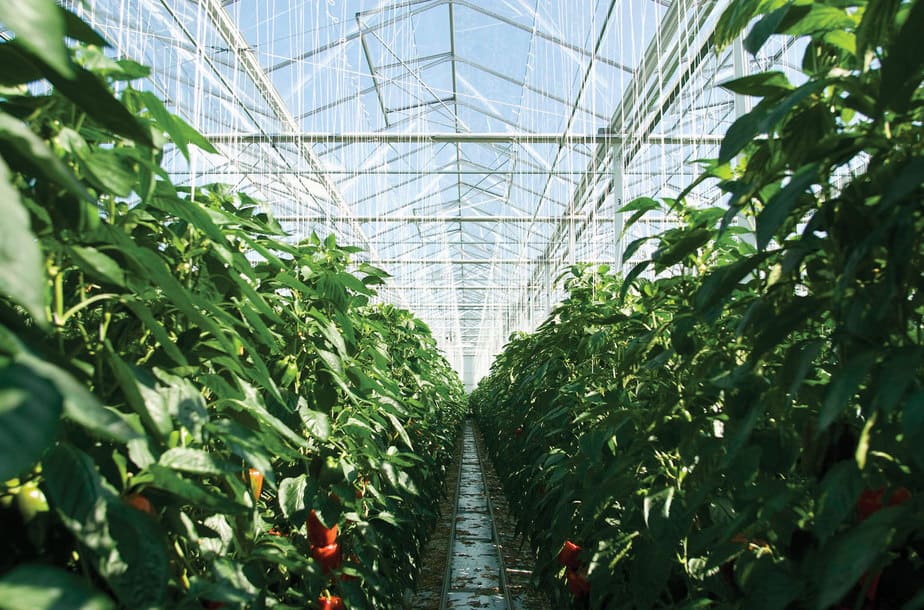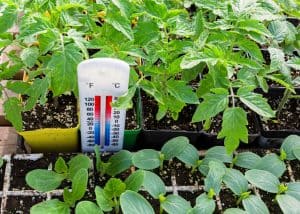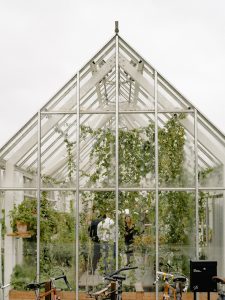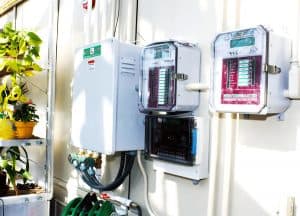Aside from proper orientation and light-capturing, air/climate control is the most important aspect of a successful greenhouse. It’s also the biggest difference between growing plants indoors instead of outside. Outside, Mother Nature determines her own temperature and airflow maintenance. Inside your greenhouse, that’s all up to you.
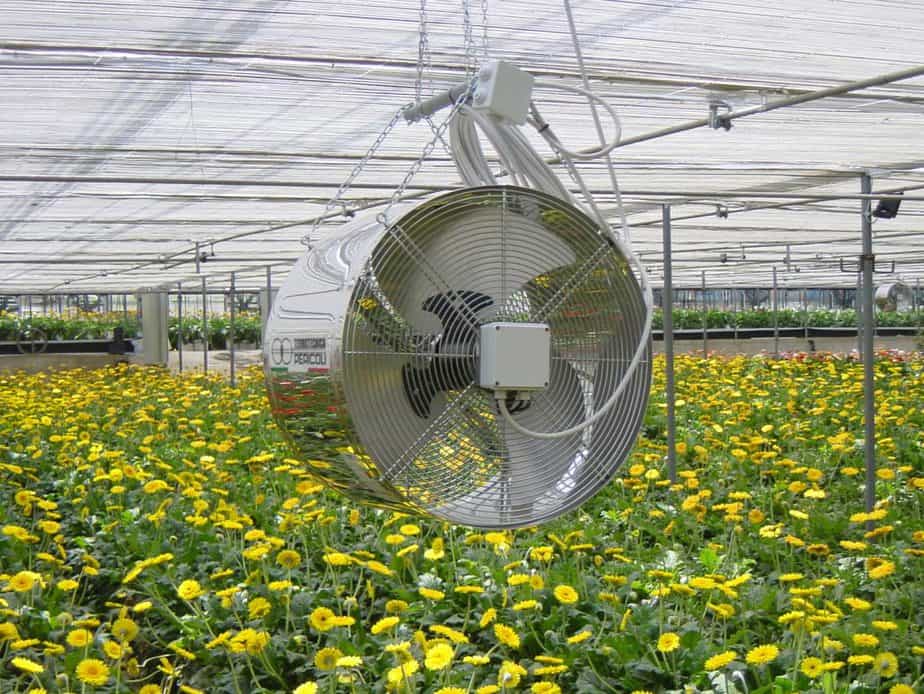
So, learn how to be the Mother Nature of your indoor greenhouse here! You may also want to check out the complete greenhouse guide if you’re new to the world of growing your own fruits and veggies.
5 Tips for Proper Greenhouse Ventilation and Temperature Control
So, you’ve gone out and got yourself a greenhouse – good for you! Pretty soon, you’ll be growing plants aplenty in there, but first, we need to be sure you’re properly ventilating your greenhouse. If you don’t, then you could have drastic consequences down the road.
When it comes to the quality of your greenhouse, there are five things to keep in mind:
- Airflow
- Temperature Control
- Humidity Levels
- Presence of Fresh Air
- Pest Control
If your greenhouse is adhering to all five of these things, then your crops will be the envy of all.
Greenhouse Ventilation Tip #1 – Airflow is Essential
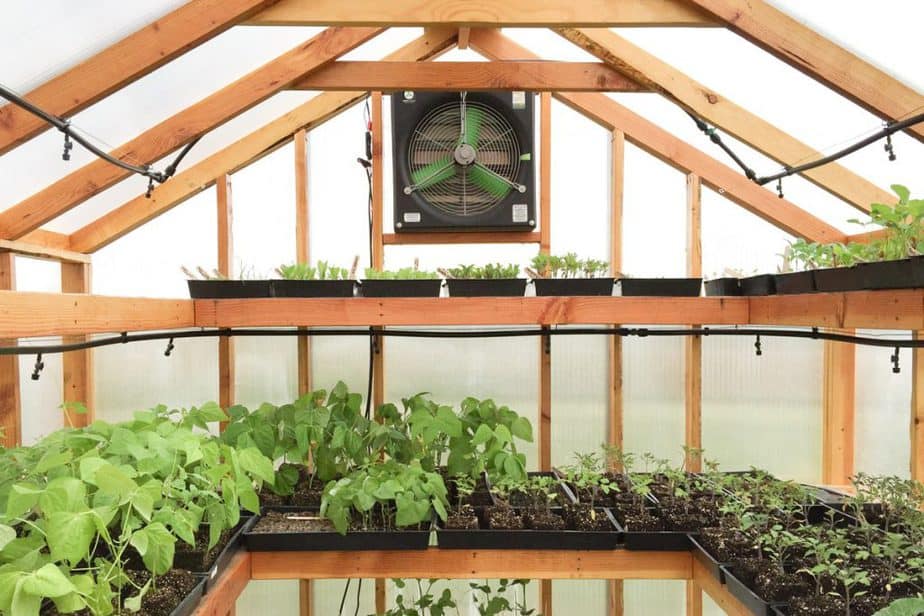
For most greenhouse, a well-designed ventilation system is more than sufficient for maintaining a healthy temperature. Ventilation might be manual or electric, with vans and/or fans, on the floor or installed within the walls.
Learn all about the different types of greenhouse fans available to you, here.
Airflow affects a multitude of aspects of your greenhouse. All of these aspects are essential parts of keeping the greenhouse climate viable for healthy plants. So, check out the 9 1/2 best accessories for greenhouses to help get a leg up on airflow in yours too!
Greenhouse Ventilation Tip #2 -Temperature Control is Key
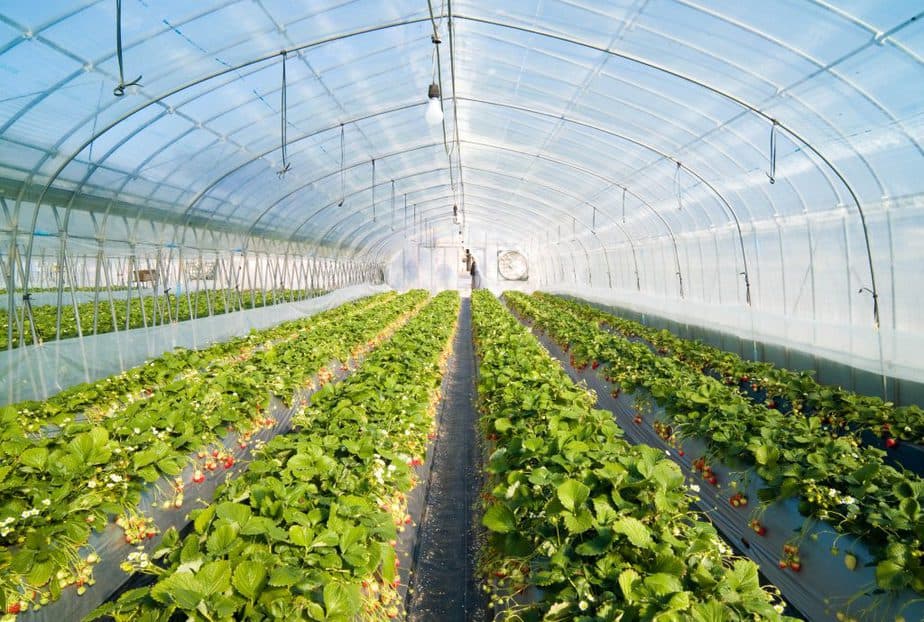
You probably built your greenhouse in order to keep plants warm, right? That’s a good thing, but without proper ventilation, pretty much every greenhouse will get too hot, even in relatively cool weather.
Remember that your greenhouse will typically be at least 10-20°F warmer than the outside temperature. Especially in hotter climates and in summer months, many plants will wilt and die if the greenhouse temperature isn’t controlled.
Keep in mind that the variety of plants you are growing will determine what your greenhouse climate needs to be, and that might vary greatly. (For example, are you growing tropical plants like African violets and oranges alongside moderate-climate plants like peas and tomatoes?). It’s also worth noting that the size of your greenhouse will affect the resources it takes to cool it.
Greenhouse Ventilation Tip #3 -Humidity
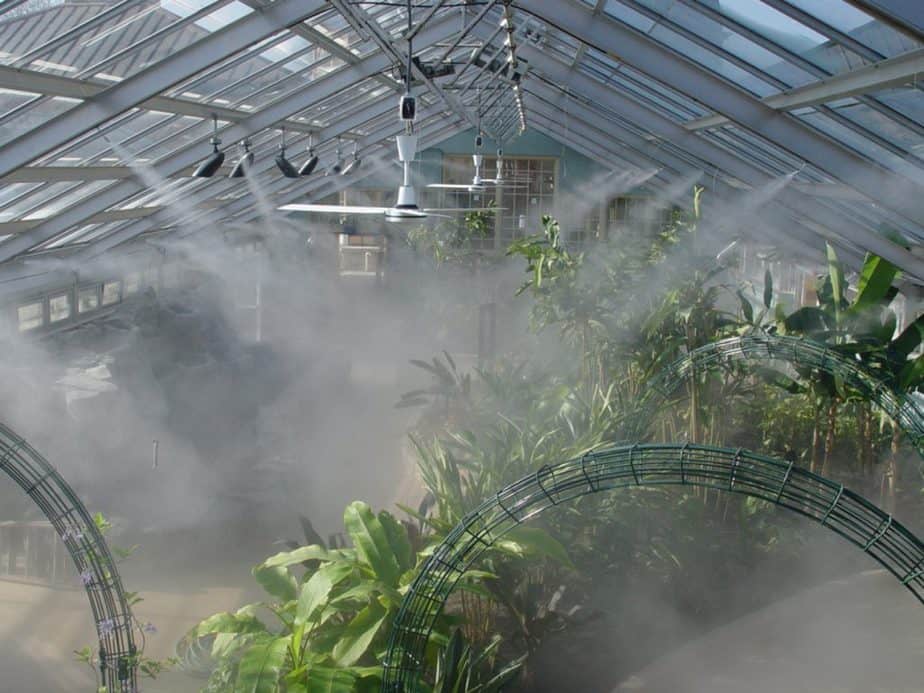
All plants need moisture control.
Just like temperature, this factor may vary depending on the kind of plants you’re cultivating—although it will not vary quite as widely as temperature requirement. Semi-arid plants like succulents and cacti are particularly sensitive to humidity, while other plants like leafy greens and many perennial flowers like it more moist.
Greenhouse Ventilation Tip #4 – Find Fresh Air
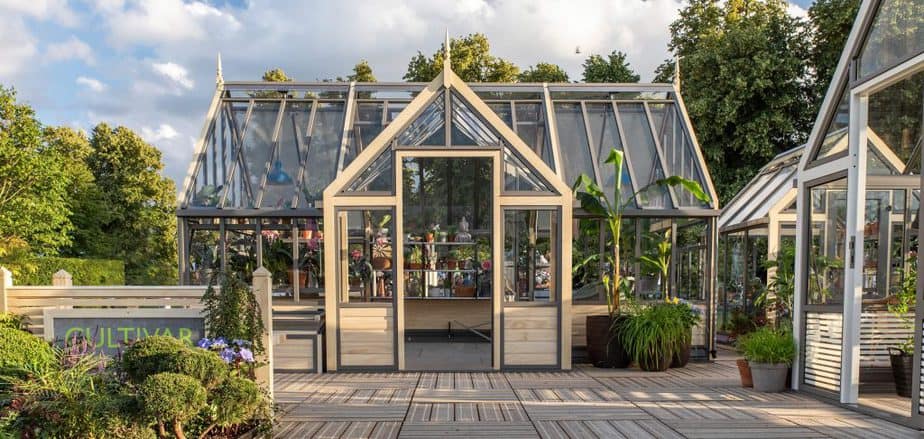
Air circulation is also essential to photosynthesis: all plants need carbon dioxide to stay alive. Without good airflow, plants won’t do as well when it comes to capturing CO2 and staying healthy.
As a result, you should take steps to ensure that your plant babies are getting all the CO2 they could possibly need. If you’re unsure about what kinds of greenhouse panes allow for opening and closing, then check this out.
Greenhouse Ventilation Tip #5 – Pest Control in Your Greenhouse
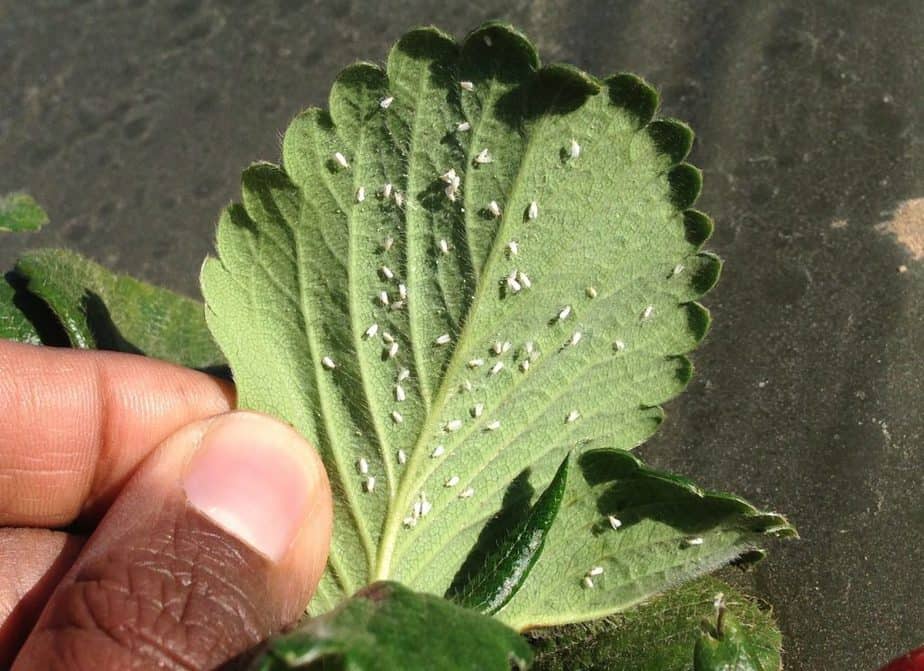
Good greenhouse airflow is a two-fold solution when it comes to pest control. First, plants are more resilient against pests like whiteflies and aphids if they are kept healthy and without too much moisture. Plus, circulating fresh air discourages bugs from making a home in your greenhouse.
So, if you want to make sure that you don’t have a pest problem in your greenhouse, then take the time to create proper airflow! Vertical gardening can also help to alleviate some pest problems.
Greenhouse Custom Climate Control
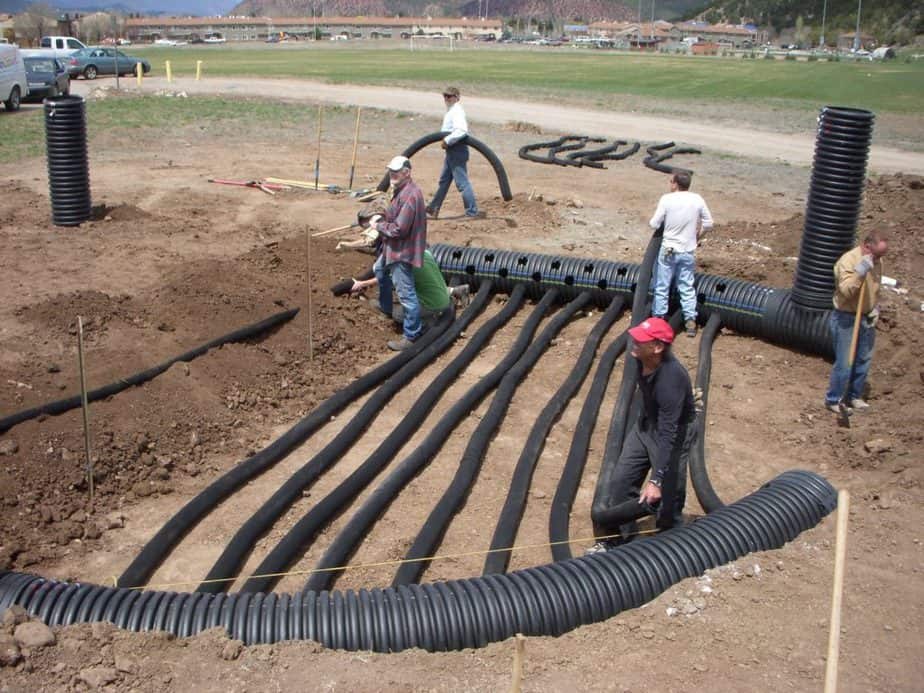
One of the more advanced, technical aspects of ventilation and cooling is the possibility of creating multiple “micro-climates” within your greenhouse. Mind you, these won’t be as drastically different as “in-real-life” climates, but it’s possible to let one part of your greenhouse become warmer or more humid, while other corners are fit for less heat-loving plants.
Keep in mind that this also has very much to do with your greenhouse location and orientation toward the sun; vents and fans are just a part of fine-tuning the greenhouse climate.
The Basics of Greenhouse Ventilation
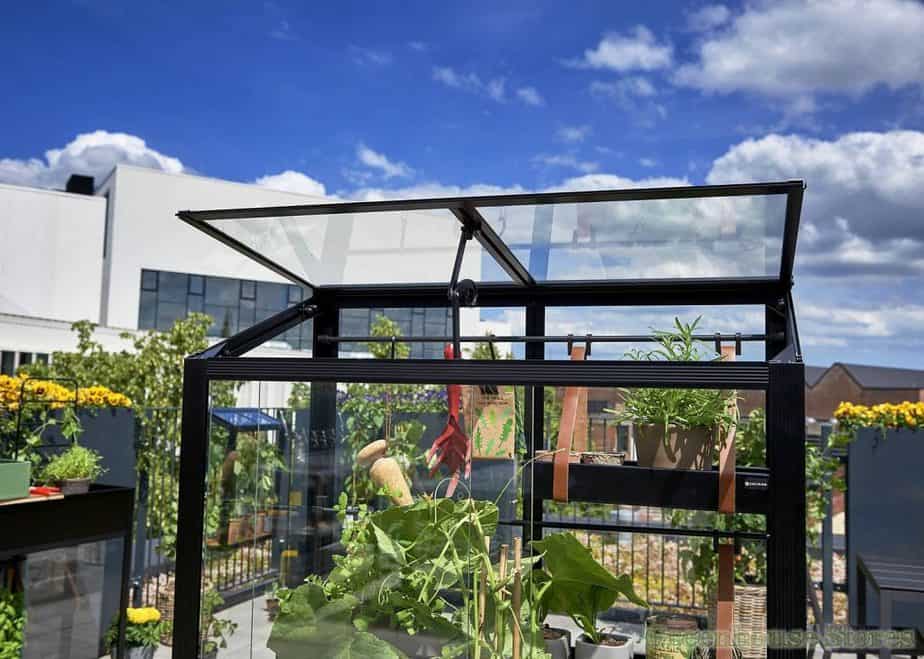
If you want to be extremely detailed about it, the ideal cross-breeze in a well-designed greenhouse is about 2-3 miles per hour. This may involve the wind passing over the roof to a vacuum, vents releasing the air, exhausted If sidewall vents are open, cool replacement air enters and drops to the floor level.
How many fans do you need? How many vents should be incorporated into the structure? How much air circulation do you want to stoke up?
This can get quite technical, but for most backyard greenhouse owners, keep it simple. Look to your plants for answers. Is the soil sufficiently moist without being overly wet? Are your plants happy? Are you free of bugs? Is the temperature in your greenhouse stable and ideal for your crops?
Use your thermometer and humidity sensor to dial in the ideal airflow for your greenhouse. Creating the best environment in your greenhouse might take some experimenting, so be patient and attentive.
Of course, even with powered devices, understanding airflow concepts is essential for designing the best cooling and ventilation system for your greenhouse.
Cross-Breeze in Your Greenhouse
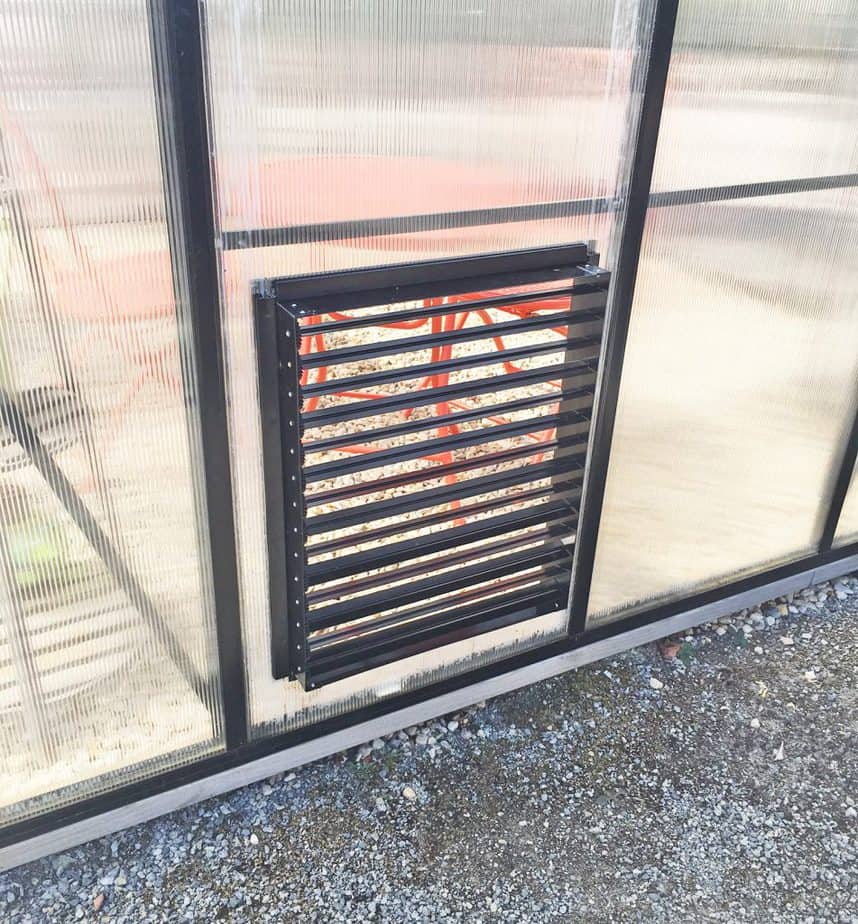
The best kind of airflow for a greenhouse is a horizontal cross-breeze. Built-in wall vents are placed near the base and at the top of the structure, so cool air can enter and flow across the greenhouse.
By placing vents on opposite sides of the greenhouse, some near the base and some near the top, you’ll maximize natural airflow. Heat will escape from the top vents, and plants get a consistently fresh supply of carbon dioxide.
How Heat Buoyancy Can Provide Cross Breeze for Your Greenhouse
Understanding heat buoyancy or natural convection is a key to getting a good cross-breeze. Hot air rises, so it will get trapped in the top of your greenhouse without ventilation up-top.
Thinking about heat buoyancy when choosing where to place particular plants is crucial, too. You can start to create a warmer climate up in the top of your greenhouse—using higher shelving (and a step stool!) and even hanging planters, you can cultivate more heat-loving plants higher up.
Natural Cross-Ventilation
It’s certainly possible to ventilate your greenhouse without electricity.
The most low-tech and time-tested way to give your greenhouse good airflow and temperature maintenance is to design the structure so that a sufficient cross-breeze can move across the greenhouse. Without electricity, this will just involve well-placed vents!
Choosing Fans and Vents for a Greenhouse
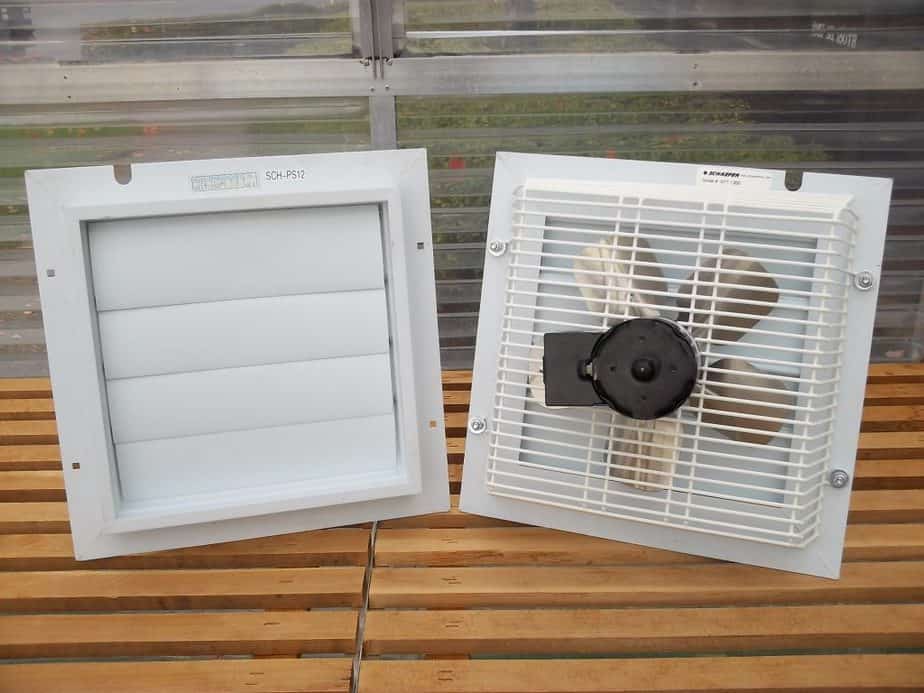
Here are some things to consider when choosing which fans and vents to purchase and how to set them up:
- Do you want manual or automatic ventilation?
- If you go automatic, how will you power your vents/fans?
- How big is your greenhouse? More space means more airflow needed.
- What kind of plants are you growing and what climate do they need?
- Are you cultivating plants that require varying climate types?
Greenhouse Airflow Tools
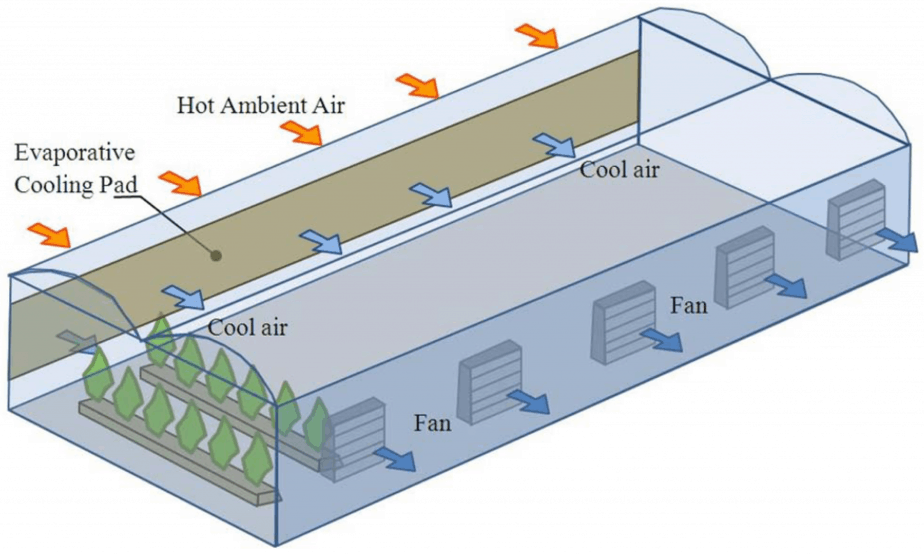
There are a variety of options for creating optimal airflow in your greenhouse. As a result, choosing the correct kind of fan for your environment is of the utmost importance. It sure would be a bummer if you build a great greenhouse in Phoenix, Arizona but purchased airflow enhancers ideal for Alberta, Canada, right?
So, be sure to do extensive research on the topic of greenhouse fans to ensure that your airflow is ideal.
Greenhouse Fan Option #1 -Exhaust Fans
Exhaust fans pull air out of your greenhouse. You likely have an exhaust fan in your bathroom and in your kitchen, over the stove.
A wall-mounted exhaust fan is the ideal choice for most greenhouses. Ideally, exhaust fans should be placed towards the roof of the greenhouse, opposite the door. This will create a good horizontal cross-breeze.
Exhaust fans are exceptionally important in hotter weather, and/or when your greenhouse is getting very humid. In addition to circulating air for good moisture control, a high wall-mounted exhaust fan box will create a slight vacuum effect in the house. That means warm air in the top of the structure will be pulled down, to keep temperatures level.
Consider a fan with easy-accessible speed control to give yourself the flexibility to manage ventilation and temperature. This becomes very important as the seasons change.
Greenhouse Fan Option #2 – Circulation Fans
Circulation fans have blades that move air around the structure, instead of just pulling air out.
Greenhouse Fan Option #3 – Hanging Fans
A fan that hangs from the ceiling of your greenhouse is a fantastic way to get air circulating throughout the structure. More expensive hanging fans are tailor-made to create a perfect horizontal cross-breeze in your greenhouse.
Hanging fans are ideal to manage the heat buoyancy issue in your greenhouse—they’ll circulate hot air trapped in the top of the structure.
Greenhouse Fan Option #4 – Floor Fans
A simply circulation fan that sits on the floor can work as the simplest solution for moisture and temperature control in your greenhouse. Be aware the most floor fans won’t do much to manage heat buoyancy.
But ground-based fans are an excellent way to manage any extra moisture accumulating on the floor of your greenhouse.
Greenhouse Fan Option #5 – Automatic Fans (with Thermostat)
Go all-out with a shuttered fan that incorporates a built-in thermostat and speed control. This is top-of-the-line climate control for your greenhouse!
You can even get super high-tech with a humidity and temperature control system attached to your exhaust fan. These are by far the best but most expensive options for greenhouse ventilation and cooling. They’ll also require more technology expertise—but it’s worth it!
Vents in Your Greenhouse
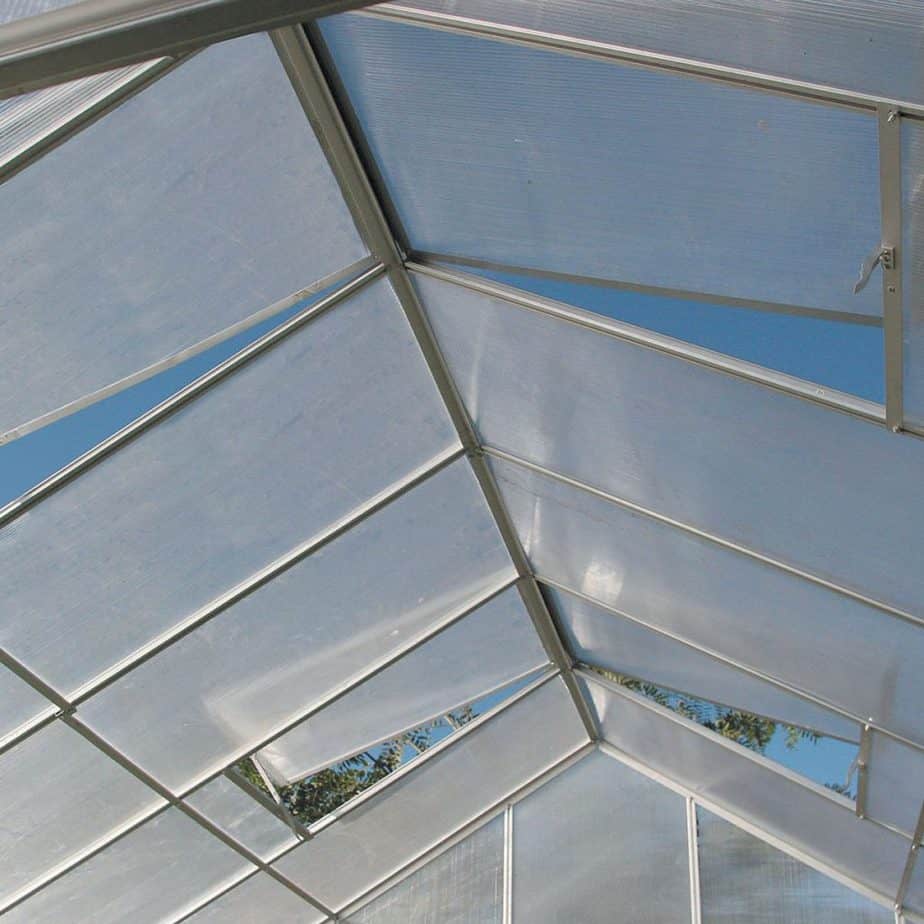
If you’re building a greenhouse from “scratch,” look into what kind of vented panels work best for your structure. Remember that it’s ideal to have vents on top of the greenhouse.
Automatic Vents
A heat-detecting automatic vent opener is an incredible tool for managing airflow and temperature in your greenhouse. Instead of having to go into your greenhouse day by day to see how much airflow is needed, your automatic vents will take care of themselves!
The best way to control your greenhouse climate down to the degree is to use a thermostat combined with automatic vent openers. Set your desired temperature limits for vents to open and close. This is the choice for picky gardeners who have tropical or exotic plants in their greenhouses.
Combined with a thermostat-linked fan, automatic vents are the ideal when it comes to managing your greenhouse climate.
Solar-Powered Devices and Your Greenhouse
Want to be a greenhouse superhero? Go solar! The two go hand in hand.
Powering your vents and fans with energy from the sun takes a little more work and set-up cost, but is money-saving and earth-friendly in the long run.
Look into solar-powered vent/fan systems that get their power from the sun. Some wall-mounted fans come with solar panels, too.
Solar vent openers are totally incredible. They’ll open and close your greenhouse roof vents without a solar panel. Simply by detecting temperature, the cylinder that props open the vent will open and close.
Need additional cooling for your greenhouse?
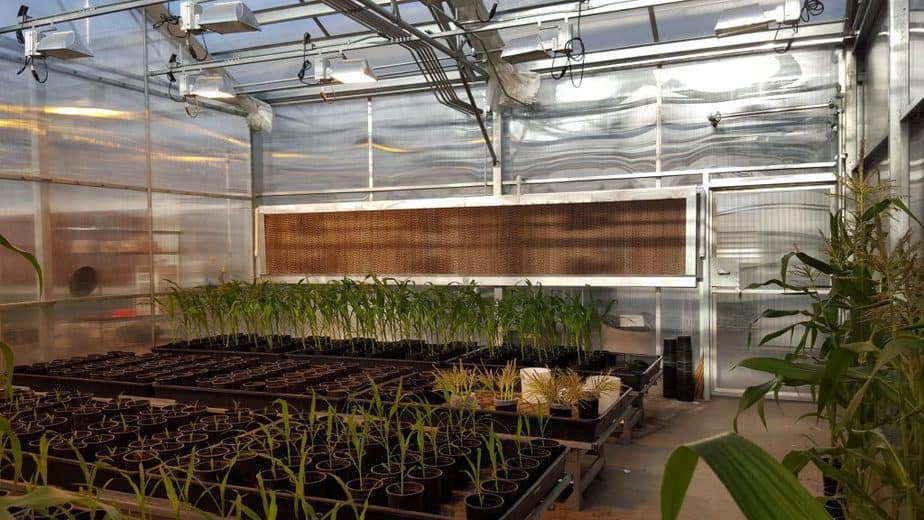
If you live in a place where it’s not unusual for the weather to get extremely hot, you may need more help than vents, and fans can give you to cool your greenhouse.
If that’s too hot for your plants, try these techniques.
Greenhouse Evaporative Cooler
Think of misting your face with cool water on a hot day. Ahh, relaxing! As the air evaporates off your skin, you feel cooler. Evaporative coolers use this same molecular magic to cool air.
Evaporative cooling works best when outside humidity is low—so desert climates are great places to use them.
They’re quite an energy-efficient option, as they use much less electricity than other cooler appliances and don’t rely on toxic liquid coolants as air conditioners do. But they do take some maintenance.
Unlike simple dehumidifiers, an evaporative cooling system will use airflow plus evaporated water to expel cool air into a space through a wet pad. A pump recirculates the water. Some evaporative coolers might even send a fine mist into the intake air stream to cool the air. How refreshing!
Greenhouse Air Conditioning
Cooling your greenhouse by air conditioning should be an absolute last resort.
The only time a cold air-conditioning system would be necessary is if you’re growing heat-sensitive plants in a desert. The cost to cool a greenhouse like that is immense, so we don’t recommend it.

